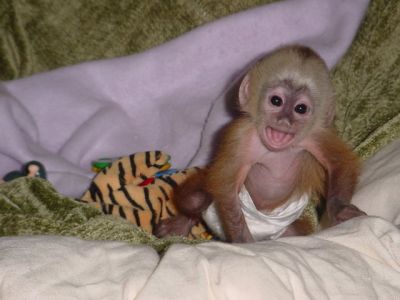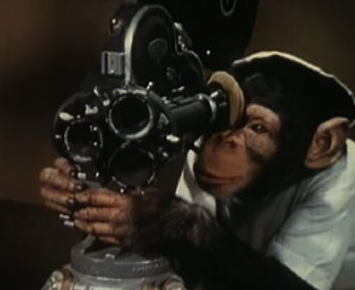As About
A monkey is a primate of the Haplorrhini suborder and simian infraorder, either an Old World monkey or a New World monkey, but excluding apes and humans. There are about 260 known living species of monkey. Many are arboreal, although there are species that live primarily on the ground, such as baboons. Monkeys are generally considered to be intelligent. Unlike apes, monkeys usually have tails. Tailless monkeys may be called "apes", incorrectly according to modern usage; thus the tailless Barbary macaque is called the "Barbary ape".

The New World monkeys (superfamily Ceboidea) are classified within the parvorder of Platyrrhini, whereas the Old World monkeys (superfamily Cercopithecoidea) form part of the parvorder Catarrhini, which also includes the hominoids (apes, including humans). Thus, as Old World monkeys are more closely related to hominoids than they are to New World monkeys, the monkeys are not a unitary (monophyletic) group. The haplorhines, the "dry-nosed" primates (the Greek name means "simple-nosed"), are members of the clade Haplorhini: the prosimian tarsiers and the anthropoids. The anthropoids are the catarrhines (Old World monkeys and apes, including humans) and the platyrrhines (New World monkeys).

The omomyids are an extinct group of prosimians, believed to be more closely related to the tarsiers than to any strepsirrhines, and are considered the most primitive haplorhines. Haplorhines share a number

of derived features that distinguish them from the strepsirrhine "wet-nosed" primates (whose Greek name means "curved nose"), the other suborder of primates from which they parted in evolution some 63 million years ago. The haplorhines, including tarsiers, have all lost the function of the terminal enzyme which manufactures vitamin C, while the strepsirrhine prosimians, like most other orders of mammals, have retained this enzyme and the ability to manufacture vitamin C. The haplorhine upper lip, which has replaced the ancestral rhinarium found in strepsirrhines, is not directly connected to their nose or gum, allowing a large range of facial expressions. Their brain to body ratio is significantly greater than the strepsirrhines, and their primary sense is vision. Haplorhines have a postorbital plate, unlike the postorbital bar found in strepsirhines. Most species are diurnal (the exceptions being the tarsiers and the night monkeys). All anthropoids have a single-chambered uterus; tarsiers have a bicornate uterus like the strepsirrhines. Most species typically have single births, although twins and triplets are common for marmosets and tamarins. Despite similar gestation periods, haplorhine newborns are relatively much larger than strepsirrhine newborns, but have a longer dependence period on their mother. This difference in size and dependence is credited to the increased complexity of their behavior and natural history.